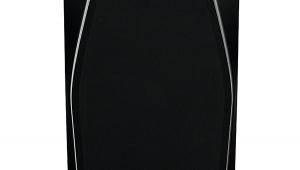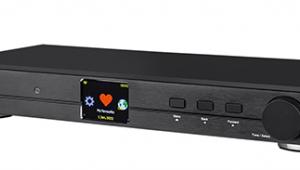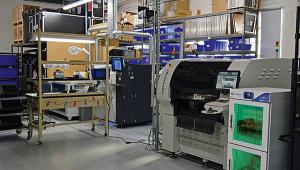Thiel Cs1.6 (£1995)
Thiel Audio Products Company of Lexington, Kentucky may have a lower profile here in the UK than in its native US, but its reputation precedes it. Designer Jim Thiel holds fast to certain, long established design principles in his loudspeakers such as eschewing high-rate filters to ensure phase linearity through crossover. He also prefers the costlier underhung voice coil geometry (voice coil much shorter than the magnet gap) for the marque’s proprietary drivers, in preference to the more commonly used overhung geometry, because of its inherently superior performance. Thiel is innovative too, examples being its cast aluminium, surface-mounting PowerPoint 1.2 and the new, top-of-the-range CS3.7 whose novel bass and midrange drivers have corrugated planar diaphragms, those of the bass units looking highly reminiscent – if you’re familiar with motorsport history – of the ‘wobbly web’ wheels originally fitted to the Lotus Type 12 of 1957.
At the opposite end of Thiel’s three-model range of floorstanders is this CS1.6, designed as long ago as 2001 but still looking fresh with its sloped, curved-edge front baffle and tall, narrow reflex port that a glance might kid you is a ribbon driver. In fact the CS1.6 is a conventional two-way comprising a 165mm aluminium-coned bass-mid unit and 25mm aluminium dome tweeter, the unusual port design being adopted to reduce windage noise – although I can’t imagine that its striking visual effect wasn’t a point in its favour also.
Unusually for such a small driver the bass-mid unit has a 3in diameter voice coil, so the dome of the dust cap represents much more of the radiating area than normal. This stiffens the diaphragm – an important advantage in a speaker with gentle crossover slopes which are slow to suppress breakup resonances beyond the driver’s passband – and provides room for a neodymium magnet enclosed within the voice coil diameter. This arrangement significantly reduces leakage flux, allowing the CS1.6 to be used close to a traditional cathode ray TV screen. Modern, flat-screen TVs are unaffected, naturally.
Thirteen cabinet finishes are offered including a mean-looking satin black, and there’s an optional aluminium outrigger base available to improve stability – something you might well want to consider if you have boisterous young children or pets. The grille solution merits a mention as it is one of the simplest and neatest I have seen. The grille former is a thin, flexible metal sheet which locates within a shallow depression in the baffle, making it visually unobtrusive as well as ensuring minimal acoustic impact.
IN THE LINE OF FIRE
The first thing you notice when you begin to play music through the CS1.6 is its unusually high sensitivity. It is 2-3dB more sensitive than typical small floorstanders and this makes itself immediately apparent in reduced volume settings. Many higher-sensitivity speakers achieve this distinction by having a less than flat frequency response and/or by presenting a tough load to the amplifier – but the CS1.6’s tonal balance is not dominated by an overly energetic presence band (thank goodness), nor is it tough to drive. Indeed, you have to take care not to sit too high relative to the tweeter otherwise presence band output will be suppressed. If you listen at or a little above tweeter height from a distance of two or three metres you’ll be OK. If your ears are aligned with the uptilted tweeter axis – which can easily happen if you sit high and close – then you won’t hear the CS1.6 at its best.
Nor will it shine if you use the supplied screw-in cone feet on a carpeted floor, as they are not pointy enough to penetrate to the hard surface beneath. A set of aftermarket spikes would improve matters except that the inserts in the CS1.6’s base have an imperial rather than an M6 or M8 screw thread. Instead, I placed the CS1.6s with their cone feet atop two small spiked MDF platforms, achieving a good, firm foundation.
Take care over listening height and spiking and the CS1.6 really begins to shine. Its strong point, no question, is its transparent, liquid midrange which offers a high level of analysis but at the same time avoids any sense of hardness. Female vocals are particularly convincing: from Patricia Barber to Ella Fitzgerald, the CS1.6 does an outstanding job of combining natural timbres with precise articulation and inflexion, and of projecting a convincing, stable stereo image with little hint of boxiness. This is not a speaker that seduces by adding unnatural tonal warmth but simply by being artlessly and unexaggeratedly insightful.
DISCERNING LISTENING
Where it succeeds a little less well is at either frequency extreme. Bass extension is not impressive and while this can be disguised somewhat by pushing the speakers closer to the wall behind, this compromises the fine stereo imaging. At the opposite extreme, the CS1.6 can’t quite match the clean, airy treble delivered by the best aluminium dome tweeter installations. The CS1.6’s treble doesn’t integrate entirely seamlessly with its fine midrange – I mean this qualitatively rather than quantitatively – and listening slightly below the tweeter axis means that it begins to roll off a little prematurely in the last octave. I didn’t try it but I suspect that the CS1.6 would benefit from the sensitive addition of a supertweeter like the Townshend Maximum.
It’s a cruel irony that these comparative shortfalls should be thrown into sharper relief by the CS1.6’s uncommonly good midrange which alone will be enough to attract many discerning listeners. Certainly it is a fine speaker at the price and I shall miss its rare lucidity when it goes.
VERDICT
Thiel’s Coherent Source design and unusual bass-mid driver geometry express themselves in the CS1.6’s exquisite midrange sound, one of the purest you’ll hear from a compact floorstander at this price. Bass extension is limited and treble quality is average rather than exceptional but that fine mid and high sensitivity earn a firm recommendation.
Originally published in the March 2009 edition
























































